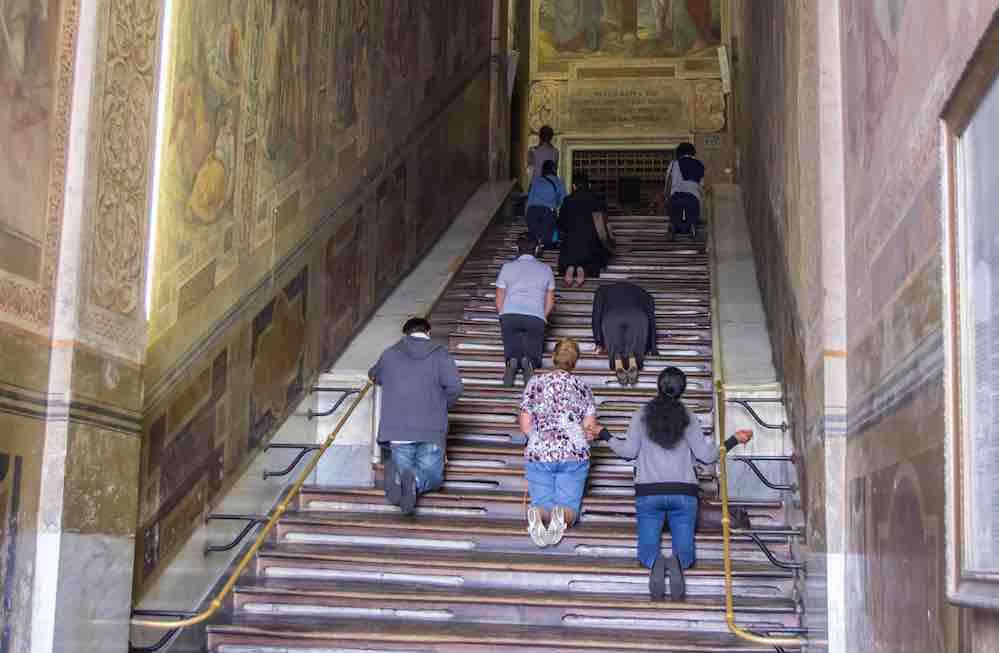
It was a hot spring day in Rome as we exited the cool marble interior of the massive Archbasilica of St. John Lateran. As we gathered together around our tour guide, Irene, her voice came through our whisper headsets, stating that our next destination was the Holy Stairs, right across the street.
“What are those?” a series of whispers cadenced throughout the group. Amid shrugs and hurried tour book perusing, we all started our short trek to the street, falling automatically into a long line of curious American tourists.
After an awkward shuffle across the death-trap Italian roadway, we collected in front of the Church of St. Lawrence, the home to these mysterious Holy Stairs. One by one, we entered through the door and were instantly greeted by the foot of the staircase. This staircase was marble and contained 28 deep and wide steps. Resting on each step were slats of wood, their purpose to conserve the shape and condition of these first century treasures.
Many have climbed these stairs since their arrival in the fourth century. They climbed on their knees only, offering up a prayer on each stair. Why did they do this? Jesus too once climbed these stairs as he made his way to trial during the Passion. These stairs once lived in the praetorium of Pontius Pilate in Jerusalem, until they were moved to their current home by St. Helena.
About five stairs into the ascent, your knees start to tremble. They start knocking against each other as you pull one up and then the other. Your back starts to ache. All the pain that accrues becomes an offering for your special intentions. Your pain becomes one with Christ’s. You are reminded of his love and suffering as you pass by the four golden frames inlaid in the stairs, commemorating and protecting his shed blood.
The Holy Stairs aren’t a breathtaking piece of architecture. They don’t catch your eye, they don’t look good in pictures. Once you get to the top you can quickly walk through the small church that they lead to, and before long, you’re on your way back down via a ramp to the side. The purpose of these stairs is to make a pilgrimage what it is meant to be: a glimpse into the life of Christ, a share in his love, and a chance to dive deeper into prayer.
To learn more about pilgrimage to Italy, click here.
Related Articles:
Camino Walk Leads Pilgrim to a Life of Service
Rejoicing in the Church Where Jesus Wept
Stranger's Words Lead Medjugorje Pilgrim Home to the Catholic Church

